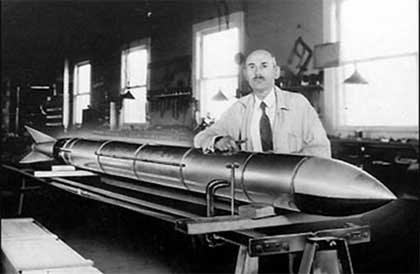
TO ERR UNDER THE 1ST AMENDMENT
By Bob Jamison
“I’ll fight for the right for you to say it”. That is a quote often repeated by a challenger of a statement made many years ago. Also, some comments often read in news papers of today prove to have that right and possess the ability to abuse it. But one of the worst was perpetrated by the New York Times on January 20, l926. Apparently, they haven’t changed much from the sounds of numerous slanted accounts while making their point even in recent times.
Robert Goddard, Phd., (l882-l945) picked up a copy of the Times that fateful day in l926. His name was rudely plastered because he had the audacity to suggest a rocket might travel in space. This is a quote from that very newspaper: “Space travel was impossible, since without atmosphere to push against, a rocket could not move so much as an inch. Professor Goddard, it was clear, lacked the knowledge ladled out daily in high schools.”
Goddard was not happy. Obviously, the Times intentionally made this noted scientist out to be a fool. However, forty nine years later, on July l7, l969, the day following the launch of Apollo 11 that would land Americans on the moon, the New York Times published a short item under the title, “A correction”. Summarizing its l929 editorial mocking Goddard, and concluding: “Further investigation and experimentation have confirmed the findings of Isaac Newton in the l7th century and it is now definitely established that a rocket can function in a vacuum as well as in an atmosphere. The Times regrets the error.”
Newton’s famous theory of an action will have a reaction (or the like) burned in young Goddard’s mind while he was pruning a cherry tree. He studied every book he could find regarding flight and physics when he created his own invention of a liquid fueled rocket. His space fantasy was fixed on the idea that someday a rocket would go to Mars. He wondered how it would look if sent up from the ‘meadow at my feet’. Indeed, his invention would first lift off from a cabbage patch near Auburn, Massachusetts on March l6, l926.
Notables such as Charles Lindbergh, Wernher von Braun and one of the most important benefactors backing Goddard’s ideas was financier Daniel Guggenheim; especially Harry Guggenheim. Of course, his writings became famous and before the matter of secrecy became so important, it fell in the hands of Nazi leaders. Ironically, those writings led to the V2 rocket research that caused much devastation to England during World War II. Eventually, because of Goddard’s foresight in rocketry, von Braun came to the U. S. after the war and was instrumental to a great degree in the development of the Saturn V liquid fueled rocket that took us to the moon.
Space travel evolved into another exploration into space but this time with solid fuel that has successfully propelled the Space Shuttle almost countless times that continues to study the universe in a multitude of aspects; and it continues.
Aside from the wonders of space we now know and have learned from that famous climb up a cherry tree by a young dreamer, we in America should be the proudest nation of all as each and every space launch demonstrates the leading ability of a great nation seeking answers.
The events of those spectacular fireworks on Cape Canaveral at the Kennedy Space Center in Florida cannot be adequately explained in black and white print. From several experiences up close and personal, this writer has had the cherished privilege of seeing seven of the NASA launches. Four were the liquid fueled Saturn V moon rockets and three of the solid fueled Space Shuttle launches.
The first launch of Goddard’s invention of liquid fuel rocket from the cabbage patch in l926, to the launches in current times, reminds you of the flight of the Kitty Hawk that flew only yards. Goddard’s first rocket went only forty one feet high. But there was proof that they each could fly.
From the emotional standpoint of seeing a launch from the closest vantage point of three miles, defies the ability to convey in print. I will try. The night before, it is customary for those with proper credentials to tour by automobile the Space Center. Then you can clearly see the magnificence of a thirty five story tall rocket glistening with crystal like frost caused by fueling and your eyes follow down to the giant flag of our country painted on its side and notice equally large letters “USA”. An indescribable lump might come into your throat. It did mine. The same experience is felt viewing Space Shuttle vehicle standing proudly on the pad waiting for the countdown.
The countdown starts much earlier. But when it really appears it will be a “go”, there is tension and emotion in all. The ignition system starts in the last seconds. A tremendous light and flash is almost blinding and smoke bellows out. In a second or two a staccato booming is heard from the launch pad as the giant missal with train loads of volatile explosive fuel lifts off for the whole world to see. The same is with the solid fuel boosters of the Space Shuttle. Their mission: Environment, creation, security, medicine, communications, etc.
In the eyes of the world, it shows a dream coming true; history is being made. And not a dime was ever spent on the moon, on Mars or in space, it is all spent right here on behalf of mankind.